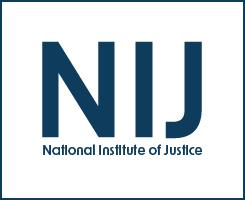Seized drugs
Tail-less precursors in synthetic cannabinoid production: investigating a clandestine laboratory, seized samples, and CB1 activity
New perspectives on THCA decarboxylation and accurate GC–MS quantitation of Total THC in Cannabis using analyte protectants
Accurate and rapid electrochemical detection of fentanyl in hydrophobic ionic liquid at subzero temperatures
Designer Fentanyl Precursors Leading the Way to New Fentanyl Analogs—The Case of ortho-Methylfentanyl
Synthetic Cannabinoids are Recurring Chemical Threats
Just Wastewater Drug Surveillance in Kentucky
In episode three of our Community Based solutions for Substance Use Challenges season, Just Science sits down with Doctor Chris Delcher, associate professor in the Department of Pharmacy Practice and Science and director of the Institute for Pharmaceutical Outcomes and Policy at the University of Kentucky, to discuss how his team tracks community drug use through wastewater analysis. Much like analyzing a urine sample to determine what drugs an individual is using. Analyzing wastewater from a community offers insight into drug trends across an entire region of people.
Just Rapidly Identifying Drugs Involved In Suspected Overdoses
In episode two of our Community-based Solutions for Substance Use Challenges season, Just Science sits down with Bill Barbour, Fatal Overdose Surveillance Program Manager at King County Medical Examiner’s Office, to discuss his team’s methods for rapid toxicology results after a suspected overdose death.
Multi-functional ionic liquid (IL)-based sensor systems for detection and monitoring of volatile organic compounds (VOCs) for public health
Recommended Scope for NPS Testing in the United States
New Psychoactive Substances in Wastewater from Rest Areas and Commercial Weigh Stations along Interstate Highways
Detecting fentanyl analogs in counterfeit pharmaceuticals by surface-enhanced Raman spectroscopy using handheld Raman spectrometers
Determination of the species identity of necrophagous insect puparial casings using field desorption mass spectrometry
NPS Discovery Q3 2025 Trend Reports: NPS Benzodiazepines, NPS Opioids, NPS Stimulants &
Analysis of cannabis plant materials by near-infrared (NIR) spectroscopy and multivariate data analysis for differentiating low-THC and high-THC cannabis
Just Navigating Reentry using Peer Support
In episode five of our community based solutions for Substance Use Challenges season Just Science sits down with doctor Nicole Swiderski, New Jersey path to recovery grant manager and Jass Pelland, New Jersey Path to Recovery program manager to discuss how the New Jersey State Parole Board's 2021 Comprehensive Opioid Stimulant and Substance Use Program Award is supporting peer recovery and other services that help individuals with a substance use disorder navigate reentering the community after release from prison.
Just Increasing Access To Drug - Checking Services
In episode four of our community based solutions for Substance Use Challenges season, Just Science sits down with Doctor Nabarun Dasgupta, pharmacoepidemiologist and senior scientist at the University of North Carolina Injury Prevention Research Center, and Erin Tracy, research chemist in the University of North Carolina Injury Prevention Research Center, to discuss their unique approach to providing drug checking services on a broad scale.
QCM-based screening of acrylate polymers for NPPA pre-concentration to enhance vapor detection of fentanyl
Seized Drugs and Toxicology Research and Development; 2022 NIJ Forensic R&D Symposium
The NIJ Forensic Science Research and Development Symposium is an open meeting where attendees can learn about NIJ-funded research across a variety of forensic science areas. This is one of four videos from the 2022 symposium, which was held March 1-2, 2022.
Presentations include -
See the YouTube Terms of Service and Google Privacy Policy
2022 NIJ Forensic Science Research and Development Symposium
The NIJ Forensic Science Research and Development Symposium is an open meeting where attendees can learn about NIJ-funded research across a variety of forensic science areas. The 2024 symposium was was held March 1-2, 2022.
NIJ and its Forensic Technology Center of Excellence are committed to improving the practice of forensic science and strengthening its impact by supporting research and development, rigorous technology evaluation and...
Recommended Scope for NPS Testing in the United States
Evaluating a Statistical Method for Comparison of Mass Spectra of Novel Psychoactive Substance
Identification of novel psychoactive substances (NPS) based on comparisons of electron-ionization (EI) mass spectra continues to pose challenges in seized drug analysis. In this webinar, a method to statistically compare EI mass spectra is described, and an application of the method to distinguish several structural and positional isomers of NPS analogs are demonstrated.
This webinar was hosted by the NIJ Forensic Technology Center of Excellence on July 25, 2024.
See the YouTube Terms of Service and Google Privacy Policy
Virtual Workshop Series: Direct Analysis in Real Time Mass Spectrometry (DART-MS) for Seized Drug Analysis
Virtual Workshop Series: Direct Analysis in Real Time Mass Spectrometry (DART-MS) for Seized Drug Analysis
Direct Analysis in Real Time Mass Spectrometry (DART-MS) is a powerful analytical technique that allows for rapid detection and characterization of a wide range of compounds, including seized drugs. Over the last ten years, the DART- MS has slowly gained in popularity in crime labs due to its ability to provide rapid, reliable results with minimal samples preparation. Despite these advantages, DART-MS remains underutilized due to cost, data interpretation...


